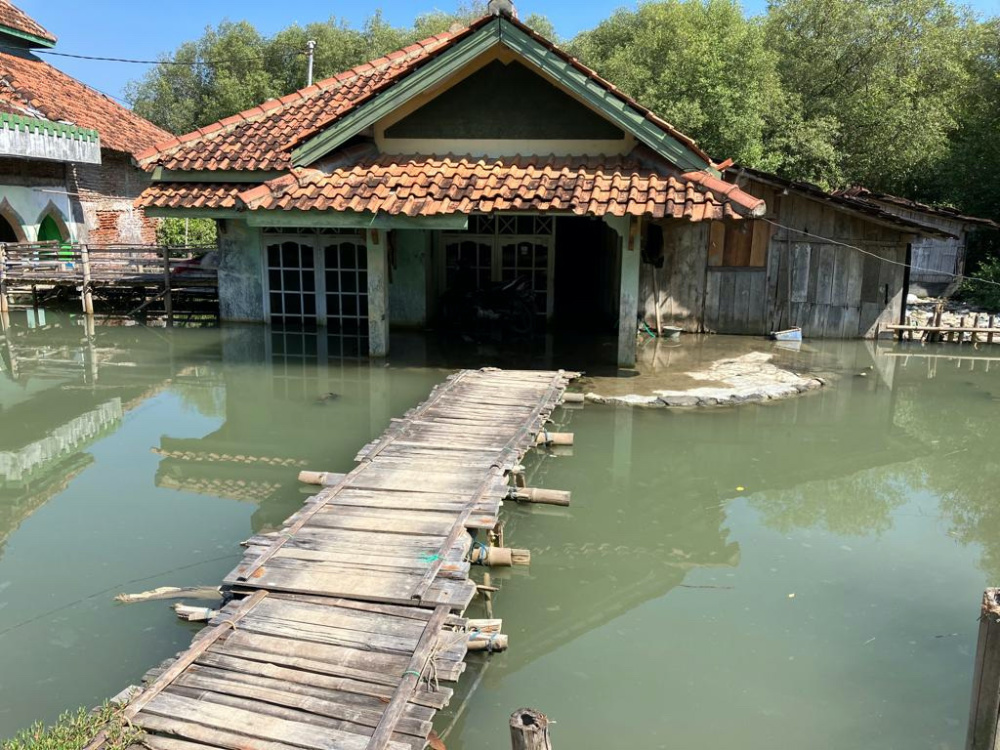
MICHAEL TAYLOR, of Thomson Reuters Foundation, reports on how a restoration pilot project on Java island is helping villagers protect their communities as climate change spurs worsening floods…
Semarang, Indonesia
Thomson Reuters Foundation
In a coastal community on Indonesia’s Java island, villagers must constantly take soil and stones to local graveyards to secure the resting places of their dead friends and relatives – fearful that frequent flooding will sweep away the deceased.
Like other flood-prone villages in the northern Demak regency, Timbulsloko’s problems are threefold – with over-extraction of groundwater causing sinking, aquaculture contributing to some of the worst coastal erosion across the archipelago, and sea levels rising due to climate change.

A flood-hit and sunken house that can only be accessed by bamboo bridge is surrounded by rising waters in Demak, Indonesia on 30th August. PICTURE:: Thomson Reuters Foundation/Michael Taylor
The more than 3,000 people in Timbulsloko, who refuse to abandon their homes, often pay for trucks to transport dirt and rocks from nearby mountainous areas in order to protect graves, and to elevate their houses above the rising waters.
“Since 2008, there is more flooding because of coastal erosion,” said fisherman Suratno, who like many Indonesians goes by one name, sitting on the floor of his one-storey house, where the front door was blocked by ankle-deep flood waters.
“Since 2008, there is more flooding because of coastal erosion.”
– Suratno, a fisherman.
“Every day there is flooding – the morning, afternoon or at night,” the 51-year-old told the Thomson Reuters Foundation last month.
Located along the Pacific Rim of Fire, Indonesia is made up of more than 17,000 islands, and faces many natural threats – ranging from earthquakes and tsunamis to volcanic eruptions.
And the effects of climate change, such as worsening floods, present ever-greater risks to the Southeast Asian nation.
In a bid to protect Timbulsloko, Suratno and other locals took part in a pilot project that sought to reintroduce previously removed mangroves in several villages to rejuvenate and protect at-risk fishing communities and their livelihoods.
Unlike many mangrove restoration initiatives, the seven-year scheme by Netherlands-based environmental group Wetlands International did not replant the trees – which are considered a key defence against flooding and coastal erosion.
Instead, the project – which ended in October, 2021 – tapped into expert and local knowledge and manpower to convert degraded aquaculture ponds into green-belts and sedimentation basins to help mangroves regrow naturally and boost fish stocks.
Indonesia is home to the world’s largest area of mangroves – which have an outsize role in absorbing carbon emissions – and the nation is on an ambitious restoration drive. It is a priority for President Joko Widodo, who is due to showcase these efforts to leaders during a G20 summit in Bali later this year.
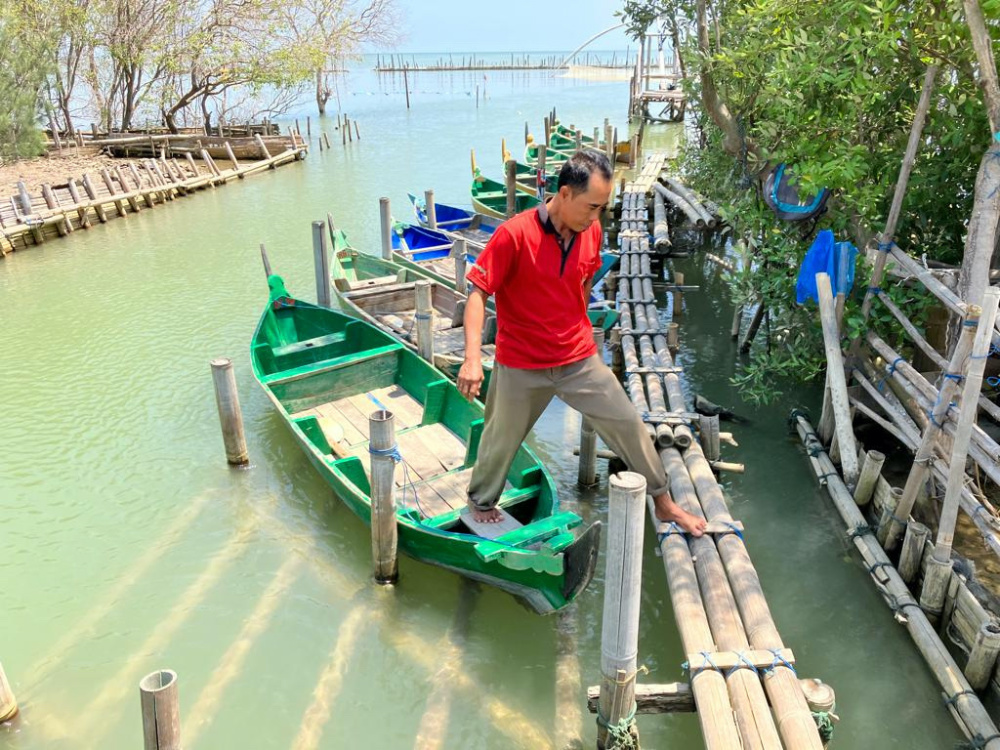
Fisherman Suratno steps off one of his boats outside his home in Timbulsloko village in Demak, Indonesia on 30th August. PICTURE: Thomson Reuters Foundation/Michael Taylor
About 30 million people suffer from the impacts of coastal flooding in northern Java, with communities being displaced and livelihoods destroyed, according to Wetlands International.
In Demak, where villagers build bamboo bridges to access their flood-hit homes, sea levels are expected to cause flooding up to six kilometres inland by 2100.
Flooding in Timbulsloko is largely due to the clearing of mangroves over many decades to make way for aquaculture ponds.
Government-built concrete flood barriers are crumbling and have had limited impact as over-extraction of groundwater by industry and households on Java also causes widespread sinking.
So in 2015, Wetlands International teamed up with nine villages along a 20km stretch of coastline in Demak.
Instead of replanting – which can focus on the wrong species or wrong areas and has a success rate of 10 to 15 per cent, mangrove experts say – the scheme enlisted Dutch and Indonesian experts to map the best places where the trees would regrow naturally.
Then, with the involvement and knowledge of local communities, €5 million project built permeable bamboo structures in the sea to trap sediment and create the best conditions for mangroves to regenerate.
Wetlands International’s advocacy officer Susanna Tol said the project had a success rate of up to 75 per cent, based on increased sediment and mangrove regrowth, although areas with heavy subsidence hindered progress.
From a cost perspective, it is hard to compare this nature-based approach with efforts that purely replant mangroves or if the villages did nothing but boost flood defences, as Wetlands International’s project also involved funding to boost livelihoods, she added.
The methods have been replicated in 13 other districts, led by Indonesia’s fisheries ministry, and the group is helping the national mangrove restoration agency draft a best-practice document.
“We integrate mangroves and the economy as much as possible because this is the only way you get local support,” said Tol.
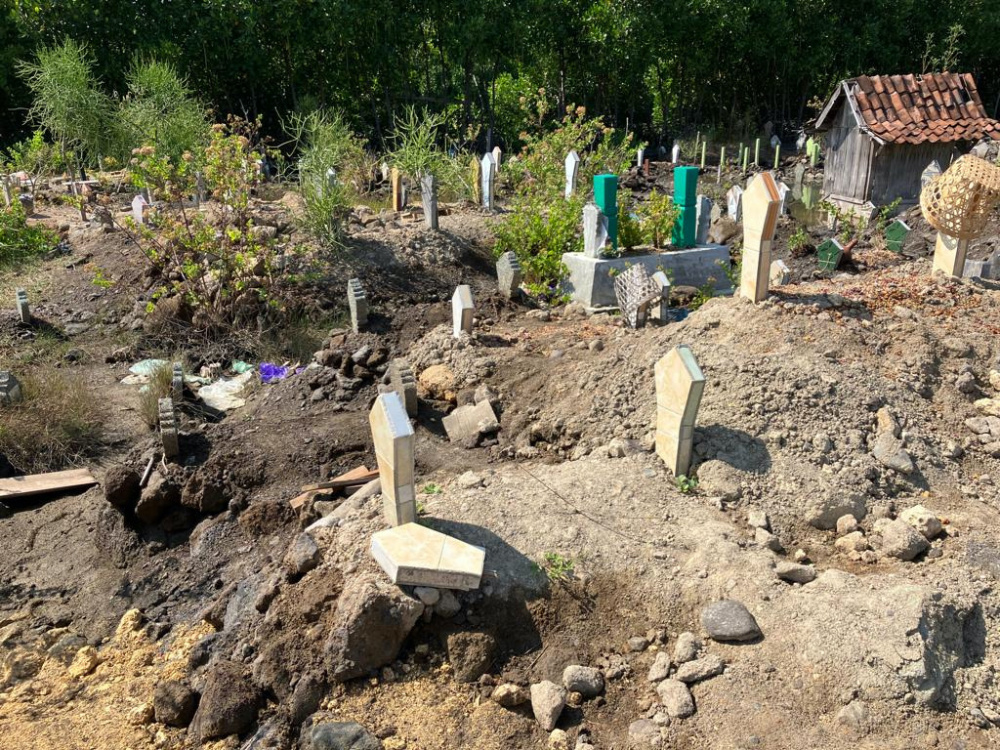
A graveyard with mounds of dirt and stones added to graves to stop them being washed away by regular flood waters in Demak, Indonesia on 30th August. PICTURE: Thomson Reuters Foundation/Michael Taylor
The project also formed community groups which are still active and have established green-belt areas, taught mangrove conservation, promoted sustainable fishing and aquaculture practices, and had access to small loans linked to restoration.
Suratno said he installed “bamboo sea walls” to protect the village against future flooding, and used a loan to purchase nets and an additional boat that he rents to other fishermen.
“Mangroves have many, many benefits,” he said, adding that the number of birds and fish had increased locally.
“The [flooded] coastal areas will come back and we will still be able to live here.”
We rely on our readers to fund Sight's work - become a financial supporter today!
For more information, head to our Subscriber's page.
There are about 80 different species of mangroves, which are largely found in the equatorial region.
They support a range of wildlife and provide nutrients to the wider ecosystem, which are vital for fisheries.
Although mangroves make up less than one per cent of tropical forests globally, they store a significant amount of carbon underground, prevent coastal erosion, and reduce the power of strong waves.
However, they are in decline, with the world’s mangrove area decreasing by about one million hectares between 1990 and 2020, although the rate of loss has slowed in recent years, according to the United Nations Food and Agriculture Organization.
Drivers of this loss include harvesting timber and charcoal, clearing for fish farms and urbanisation in coastal areas, said Chris Mcowen, lead marine scientist at the UN Environment Programme’s World Conservation Monitoring Centre.
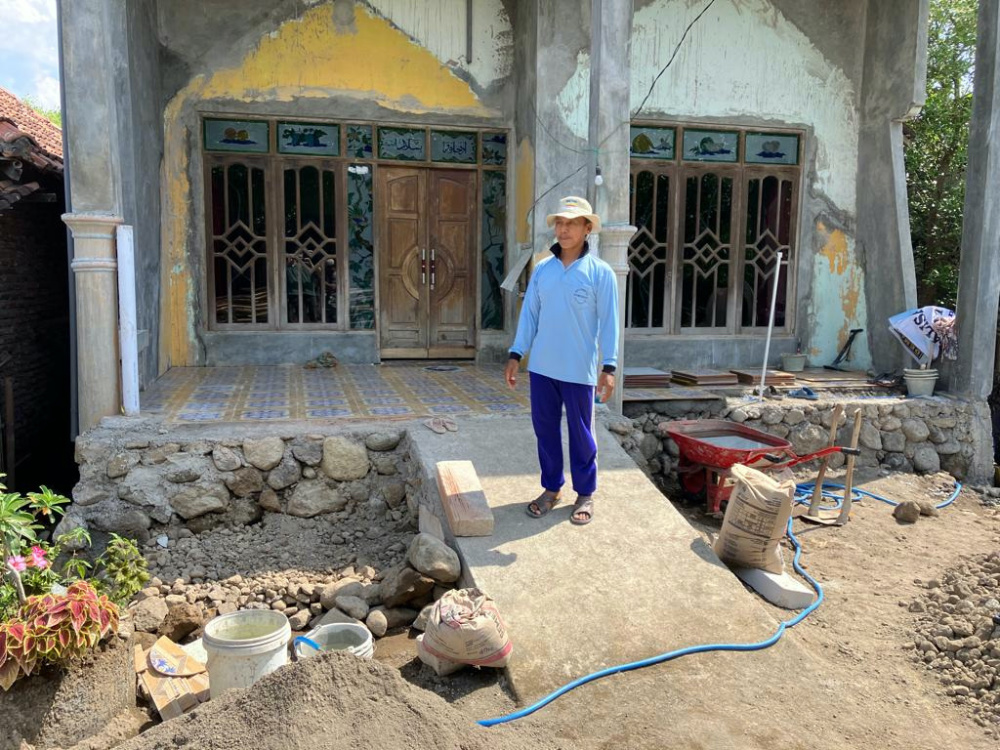
A fisherman poses outside his home, which is being raised above flood waters using shipped in dirt and stones, in Timbulsloko village in Demak, Indonesia on 30th August. PICTURE: Thomson Reuters Foundation/Michael Taylor
Recognising their value, Indonesia launched a program last year to restore 600,000 hectares of degraded mangroves by 2024, although this drive has been hindered by the pandemic.
Such targets provide a sense of urgency and are good for publicity and engaging with donors, said Mcowen.
However, local people are too often not consulted in restoration efforts, said Mcowen, adding that without buy-in from communities, such projects can be doomed to failure.
And in the face of rising seas and storm surges, mangroves should be grown where the survival rate will be highest rather than simply where they were lost previously, the scientist said.
“We’re only going to see the benefits in 20 to 30 years and restoration should be forward-looking, not just backward,” he added.
We rely on our readers to fund Sight's work - become a financial supporter today!
For more information, head to our Subscriber's page.
In the village of Tambakbulusan in Demak, where the sinking is not as severe as in nearby Timbulsloko, many mangroves have returned – having benefited from the reclamation of old aquaculture ponds and creation of green-belts.
Flooding in the village is less common, while local fishermen sell their organic fish at a premium.
Abdul Ghofur, who catches shrimp and milk fish using sustainable fishing methods, joined the Wetlands International project at its launch and is the head of a community group.
The father-of-three said that people in his village believed mangroves provided cleaner air and kept them healthier.
“I see in my village that people now care about mangroves – they no longer cut them down,” the 53-year-old added.
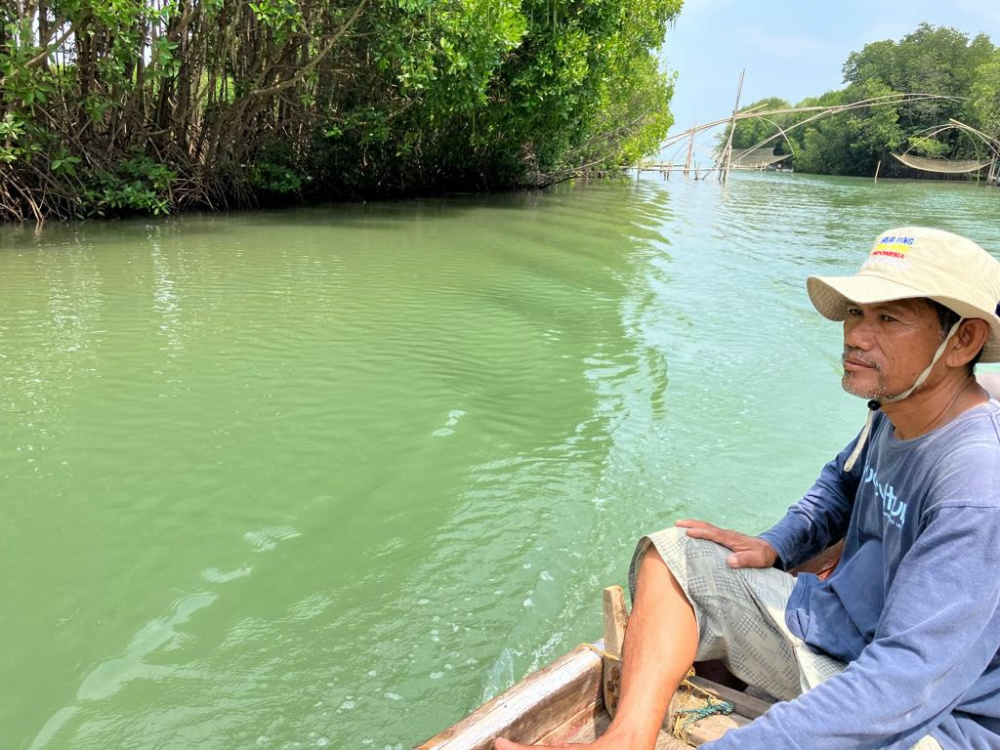
Fisherman Abdul Ghofur on his boat looks on at a mangrove greenbelt area he helped restore in Tambakbulusan village in Demak, Indonesia on 31st August. PICTURE: Thomson Reuters Foundation/Michael Taylor
In Tambakbulusan, Ghofur remembers walking with his son around the family fish farms during school holidays many years ago – teaching the boy about the importance of mangroves.
The project’s resulting increase in fish quantities and quality helped pay for his son’s education and more recently, for him to study aquaculture at university.
“I want my son to become a teacher [of aquaculture],” Ghofur said. “Mangroves have changed my life.”






